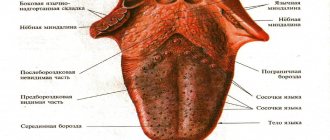Average reading time: 8 minutes
Publication date: August 09, 2021
Zakharova Carolina Yurievna
Physician and author of scientific articles on therapy, ophthalmology, pediatrics and psychiatry
The mark “37” on the thermometer can cause many questions. Should I be worried or is this normal? Or maybe it’s time to take antipyretics? Let's figure out what causes a slight fever and what should be done.
Up to contents
Why does the temperature rise to 37 °C?
Body temperature is not a constant value, it fluctuates during the day within the range of 0.1 -0.6 ° C, in the morning it is usually lower than in the evening1. Therefore, the norm may be within 36-37 °C1.
However, the method of measurement must be taken into account. Typically, body temperature is determined in the armpit, and here its optimal value is considered to be 36.6 °C1. And if you use a rectal thermometer and measure body temperature in the rectum, remember that here it is normally 0.5-1.0 °C higher than under the armpit1.
When the thermometer records a temperature between 37°C and 38°C (when measured in the armpit), this is already a fever1, but since it is not pronounced, it is called subfebrile3.
The term “subfebrile” comes from the words sub – “under, to a weak degree” and febris – “fever”3. Low-grade fever that lasts a long time is called low-grade fever3.
Depending on the severity, subfebrile condition is distinguished2:
- ● low – up to 37.1 °C;
- ● high – up to 38.0 °С2.
Despite the variety of causes, in 70-75% of cases, an increase in temperature to 37-38 ° C is caused by infection2. Infectious agents, such as viruses and bacteria, act as pyrogens4 - substances that rearrange the functioning of the thermoregulation center in the brain (hypothalamus). In this center, two areas are separately distinguished: heat production and heat transfer1,4. Under the influence of pyrogens, the balance of heat production and heat loss is disrupted, which leads to fever1,4.
Up to contents
And yet, what diseases can cause low-grade fever?
An increase in temperature to 37–37.5°C can be a symptom of a number of difficult to diagnose diseases. Here are some of them:
- sluggish local and general inflammatory processes in the body;
- pneumonia (pneumonia);
- chronic tonsillitis (inflammation of the palatine and pharyngeal tonsils);
- hepatitis;
- tuberculosis;
- HIV AIDS;
- chronic pyelonephritis (inflammation of the kidneys);
- dysfunction of the cardiovascular system;
- ulcerative colitis, gastritis (inflammation in the gastrointestinal tract);
- toxoplasmosis, herpes, other TORCH infections;
- allergic reactions;
- malignant tumors (oncology);
- thyrotoxicosis (increased production of thyroid hormones);
- helminthic infestations or the presence of other parasites in the body;
- anemia.
Diagnosing a disease when the only symptom is low-grade fever is difficult. (Editor’s note: in the scientific article “Fever of unknown origin,” a group of medical specialists explains in detail why it is difficult to establish a diagnosis and what studies may be required to determine the cause of an increase in temperature to 37‒37.5 ° C).
Causes of temperature 37 °C without cold symptoms
Sometimes the rise in temperature is not associated with the action of viral and bacterial pyrogens; this condition is called hyperthermia1.
Mild hyperthermia may occur in healthy people1:
- ● during intense physical activity1;
- ● after meals1;
- ● against the background of severe stress (“workday hyperthermia” in adults)3;
- ● in hot weather1 and prolonged exposure to the sun2;
- ● as a side effect of taking certain medications1.
In women, a temperature of 37 °C can occur after ovulation5 and 7-10 days before the onset of menstruation6. This temperature reaction is associated with an increase in the level of the hormone progesterone5.
Pyrogens that are formed in the body itself can also affect the thermoregulation center, which is why low-grade fever often occurs with non-infectious diseases4.
For example, a temperature of 37 °C may be a sign
:
- ● neurogenic hyperthermia4, which is associated with imperfect nervous regulation4,7;
- ● iron deficiency anemia2 (low hemoglobin levels due to iron deficiency);
- ● chronic gastritis, hepatitis and colitis2;
- ● peptic ulcer of the stomach and duodenum2;
- ● urolithiasis and cholelithiasis1;
- ● the presence of foci of inflammation in the body (for example, in the bronchi or genitourinary organs)2;
- ● bronchial asthma2;
- ● autoimmune diseases2;
- ● hormonal imbalance (with menopausal syndrome or increased thyroid function)6;
- ● malignant process2;
- ● diseases of the hypothalamus2.
Up to contents
Reduced body temperature
Like high temperatures, low temperatures also indicate problems. Especially if it lasts for a long time. This leads to rapid fatigue, loss of mood, weakness of the body, etc.
Causes of low body temperature
A decrease in temperature is observed:
- with low hemoglobin;
- in case of internal bleeding;
- during pregnancy;
- if there are problems with blood vessels;
- for diabetes;
- with pathology of the adrenal glands;
- during brain tumors;
- with asthenic syndrome;
- during skin lesions;
- as a result of seasonal ARVI;
- in case of intoxication;
- as a consequence of hypothermia;
- with hypothermia.
Symptoms of low body temperature
Symptoms include:
- weakness;
- drowsiness;
- apathy;
- chills;
- feeling of cold.
Is it necessary to bring down the temperature of 37 °C in an adult?
Fever itself is a protective reaction of the body8, so antipyretic drugs should be taken only as indicated - for adults at a temperature above 38.5 °C and/or muscle and joint pain due to ARVI12.
For ARVI it is recommended12:
- ● bed rest;
- ● drinking plenty of water;
- ● a diet rich in vitamins;
- ● symptomatic treatment (to relieve nasal congestion, cough and other symptoms of a cold);
- ● taking antiviral drugs.
Anaferon®11 lozenges can be used as part of complex therapy for ARVI. The active ingredient of the drug is antibodies to interferon gamma. Their antiviral and immunomodulatory effects are associated with the activation of natural immune factors that help the body fight viruses11,13. Anaferon ® is indicated for the treatment of influenza and other acute respiratory viral infections11. Its use as part of complex therapy helps reduce the duration of the main symptoms of the disease by 1.5 times or more13. Also, Anaferon ® can be used during the ARVI epidemic season as a prophylactic agent for 3 months11.
Up to contents
What products can pregnant women use?
The period of waiting for a child imposes restrictions on the woman’s choice of medications. Not all antipyretic pills are allowed during pregnancy, so it is necessary to coordinate the issue with a therapist or gynecologist.
In addition, it is not necessary to take medicine in all cases; sometimes a slight increase in temperature is an indicator of a change in a woman’s hormonal levels.
The safest medicine is Paracetamol without any additives and in the minimum dosage. The duration of use should be minimal - until positive dynamics appear.
The second drug is Ibuprofen, but it is strictly prohibited in the middle of pregnancy with increased uterine tone and the threat of miscarriage. In the third trimester, admission is prohibited.
Prohibited products include Ibuklin, drugs based on analgin, acetylsalicylic acid, Next.
Temperature 37 °C in children
Many of the causes of hyperthermia in a child are the same as in an adult. For example, children can overheat in the sun in hot weather; their nervous system, which controls the processes of heat production and heat transfer, may also be disrupted3.
In most cases, the child develops a so-called post-infectious low-grade fever, which is associated with a recent acute respiratory viral infection.
In 86% of children, low-grade fever may persist for 3-6 months after viral infection3.
Often a child has a body temperature of 37 °C for no apparent reason. This is the so-called institutional fever or “thermoneurosis”3. With “thermoneurosis,” the child usually tolerates the fever well. Parents may notice that antipyretic drugs do not give the desired effect, and the rise in body temperature is associated with psycho-emotional stress, for example, the stress that the child experiences at school3.
Up to contents
Viral hepatitis B and C
Hepatitis caused by viruses often causes low-grade fever. The onset may be acute or gradual. Symptoms of viral hepatitis, which is sluggish:
- low-grade fever
- weakness in the body and general poor health
- discomfort in the liver area after eating
- active sweating
- slight manifestations of jaundice
- muscle pain
- joint pain
The temperature can rise to low-grade levels if hepatitis occurs in a chronic form, periodically exacerbating. Hepatitis can be “caught” through medical instruments that are not disinfected, unprotected sexual contact, in the dentist’s office and during a manicure, through blood transfusions using non-sterile systems (and if a person has been transfused with the patient’s blood), from a sick mother to the fetus during pregnancy, through dirty syringes.
Is it worth lowering a child’s temperature to 37°C?
Children usually have a higher body temperature than an adult1, so do not rush to give your child antipyretics.
Symptomatic treatment with antipyretic drugs is indicated when8:
- ● body temperature above 39.0 °C in children of any age;
- ● fever above 38 °C in children under 3 months or if the child has severe concomitant diseases, for example, damage to the cardiovascular and nervous systems;
- ● “white” fever, in which the skin becomes cold, pale, and a “marble” pattern appears on it.
In other cases, it is not recommended to reduce a child’s fever. In addition, it should be borne in mind that fever itself activates the immune system in the fight against infection4. For ARVI in children, to support immunity, the doctor may recommend Anaferon ® for children in the form of lozenges or drops for oral administration9,10.
Anaferon ® for children is approved for use in children from 1 month of age as part of complex therapy for ARVI. It stimulates the immune system, promotes the production of antibodies and increases the functional activity of immune cells9,10. Also, Anaferon ® for children can be used for the prevention of ARVI9,10 due to its ability to maintain the child’s body in a state of high readiness for protection against viruses14.
Up to contents
Release forms of antipyretics
Medicines for fever may differ not only in the active substance, but also in the form of release.
It is selected based on the patient’s age, hyperthermia tolerance, the presence of chronic pathologies, and intolerance to certain substances.
Main types:
- capsules and tablets. They have a lower price compared to other forms and are universal in use. One piece is enough to reduce the indicator for 6-8 hours. Suitable for fever in adults, but not prescribed for small children and unconscious patients;
- water-soluble tablets and powders. The action develops faster, but their price is more expensive than conventional fever tablets;
- solutions for injections and systems. Used in hospitals to provide emergency assistance to avoid seizures, to relieve fever in unconscious persons. The advantage is that the medicine immediately enters the bloodstream, there is no contact with the mucous membrane of the stomach or intestines;
- suspensions and syrups. They are produced for children, contain flavorings and dyes, and are equipped with a dosing device or measuring spoon. May cause allergies.
- suppositories for rectal administration. Prescribed to children, patients with intolerance to oral medications, and incapacitated patients. They act quickly and effectively and do not irritate the stomach.
Why do people get the flu?
Where does the flu even come from? What conditions does it require? The cause of the disease lies in the penetration of a viral agent of the genus Influenzavirus into the human body. The methods of spread are familiar to most - airborne droplets and contact. The virus easily penetrates when talking with an infected person, if you are in the same room with him, through shared items - towels, dishes, household bedding, etc.
The greatest danger is posed by infected people in the first day after the introduction of the virus, when there are still no obvious symptoms, treatment has not been started, medications are not taken, and the virus spreads to other people. According to statistics, infection occurs in 50% of people in contact with a sick person1.
With a weakened body and concurrent diseases, the flu remains in the body for a longer time. Influenza is especially dangerous and requires mandatory monitoring, effective vaccine or effective drug protection for the following human diseases3:
- Chronic respiratory diseases, pneumonia
- Defects and diseases of the nervous system
- Heart disease, arrhythmia, congenital defects
- Kidney failure
- Increased hemoglobin as a sign of diseases of the circulatory system
- Metabolic problems, diabetes
- Immunodeficiency









